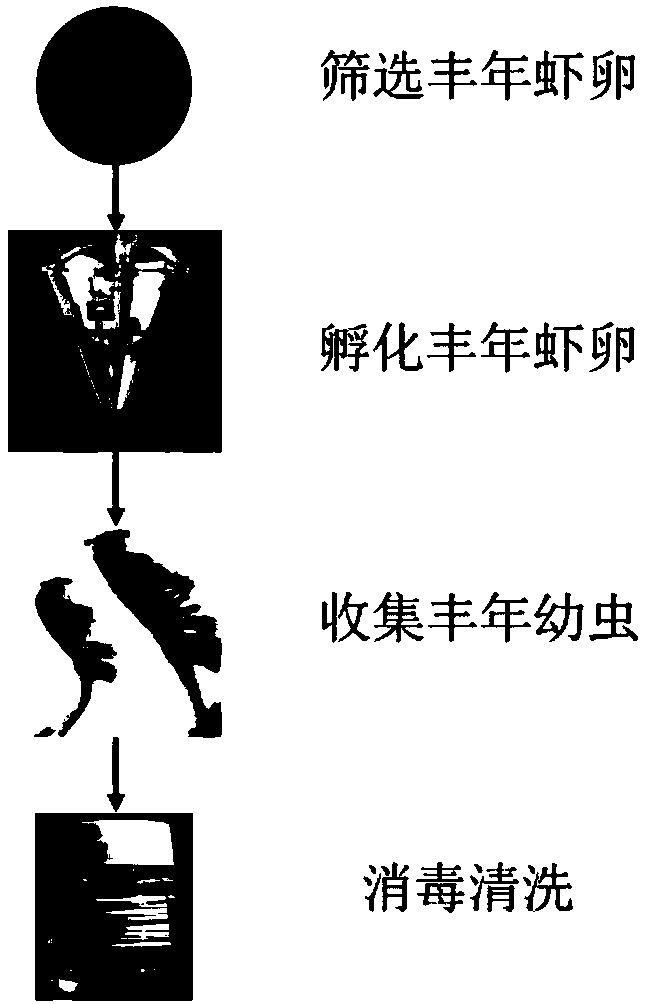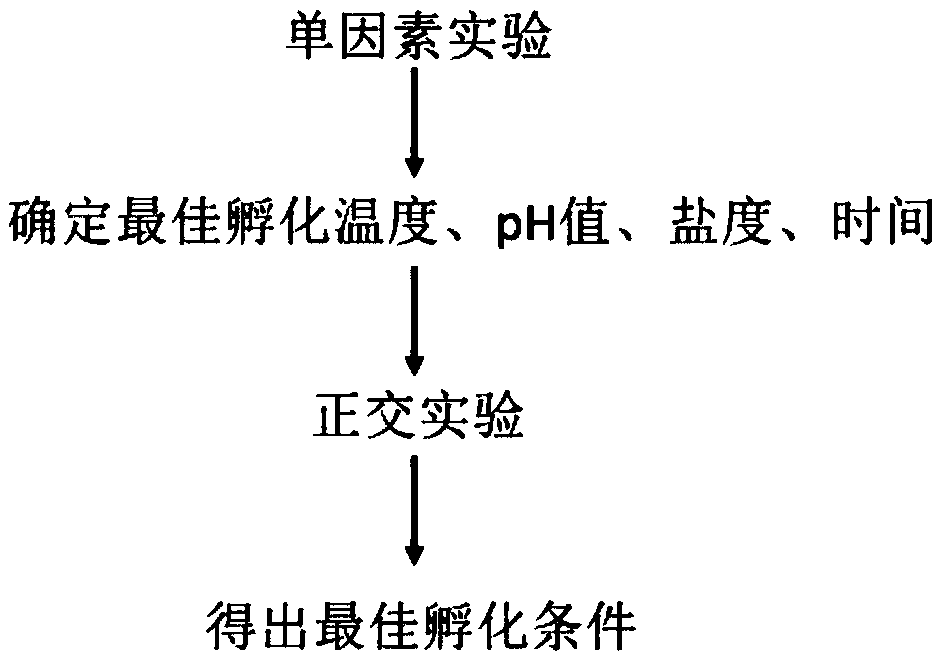Improved brine shrimp hatching and collecting method
A brine and incubator technology, which is applied in the field of improved brine shrimp hatching and collection, can solve the problems that juvenile fish cannot adapt to the water body environment, the density of feeding brine shrimp is low, and juvenile fish are easy to be infected and die, and the hatching conditions are easy to control and raw materials Environmentally friendly and easy to obtain, the effect of improving the hatching rate and survival rate
- Summary
- Abstract
- Description
- Claims
- Application Information
AI Technical Summary
Problems solved by technology
Method used
Image
Examples
Embodiment 1
[0031] An improved method for hatching and collecting brine shrimp, specifically comprising the following steps:
[0032] (1) Hatching preparation
[0033] Use a sodium hypochlorite solution with a concentration of 45ppm to aerate and sterilize the incubator (brand Beijing ESEN) for 3-4 hours, rinse the incubator repeatedly with clean water, and then add pure water to aerate and clean it for 2 hours. After cleaning, let it dry naturally.
[0034] (2) Hatch brine shrimp eggs
[0035] Screen the shrimp eggs used for hatching, and remove damaged and shriveled shrimp eggs. Accurately weigh 2g of shrimp eggs, about 3.49×10^5. Accurately weigh 10g of sea salt (the main components are NaCl, KCl, CaCl 2 , MgSO 4 ) into an ESEN incubator, add 1L of pure water to dissolve, adjust the pH to 9.5 with NaOH, adjust the temperature to 30°C with a constant temperature heater, and incubate for 22 hours.
[0036] (3) Collection, disinfection, tube loading and preservation of brine shrimp l...
Embodiment 2
[0043]Through the single factor experiment of four factors (temperature, pH, salinity, time) and five levels, the optimal level of each factor is obtained, and then the optimal level obtained by the single factor and the two levels before and after the optimal level are selected to carry out four factors and three levels Orthogonal experiment.
[0044] This embodiment 2 is compared with embodiment 1, except that the hatching conditions are hatched according to the orthogonal test scheme in the following table 1, the rest of the methods and steps are the same.
[0045] Table 1 Four-factor three-level orthogonal experimental design scheme
[0046]
[0047] The experimental results are shown in Table 2.
[0048] Table 2 Four-factor three-level orthogonal experiment results
[0049]
[0050] Result analysis
[0051] in Table 2 Respectively represent the sum of the hatching rate (the first one) and the survival rate (the second one) at each level of each factor. Due to ...
Embodiment 3
[0053] Compared with Example 1 in Example 3, the density of hatched shrimp eggs was hatched according to the following Table 3, and the rest of the hatching conditions were all using a temperature of 30°C, a pH value of 9.5, a salinity of 10‰, and a time of 22 hours. Other specific methods and steps are all the same as in Example 1.
[0054] Table 3 Effects of different shrimp egg densities on the hatching rate and survival rate of brine shrimp eggs
[0055]
[0056] It can be seen from Table 3 that when the density of shrimp eggs is 100-500 / mL, the hatching rate and survival rate are not significantly affected. When the density of shrimp eggs continues to increase to 1100 / mL, the hatching rate and survival rate tend to decline. It may be because the brine shrimp needs to be stripped when hatching. When the egg density is too high, the egg membrane will be deposited in the incubator, and the brine shrimp hatching time is 22 hours. The above reasons affect the hatching wate...
PUM
 Login to View More
Login to View More Abstract
Description
Claims
Application Information
 Login to View More
Login to View More - R&D
- Intellectual Property
- Life Sciences
- Materials
- Tech Scout
- Unparalleled Data Quality
- Higher Quality Content
- 60% Fewer Hallucinations
Browse by: Latest US Patents, China's latest patents, Technical Efficacy Thesaurus, Application Domain, Technology Topic, Popular Technical Reports.
© 2025 PatSnap. All rights reserved.Legal|Privacy policy|Modern Slavery Act Transparency Statement|Sitemap|About US| Contact US: help@patsnap.com



